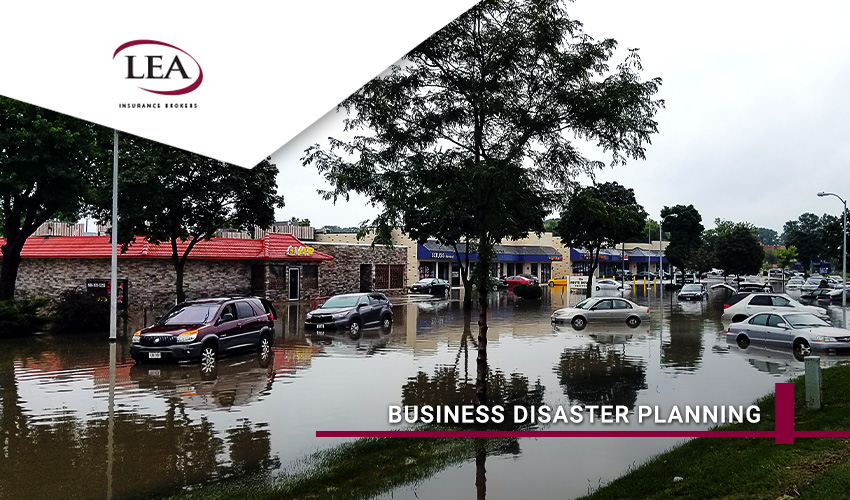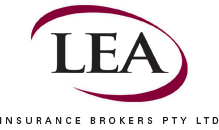
Feeling confident your business premises are disaster-ready?
It’s official. According to the Royal Commission in National Natural Disaster Arrangements, Australia can expect more concurrent and consecutive natural hazard events due to climate change.
This means further global warming, and extreme and less predictable bushfire behaviour. As well, Australia’s naturally variable climate sees season-to-season and year-to-year fluctuations in temperature and rainfall. Our country has been transforming from drought to flood seemingly overnight – it’s even immortalised in poetry.
But have you written your own business continuity plans to ensure your premises are disaster-ready?
Which disasters affect Australia?
The royal commission lists recent disasters linked to natural hazards, including:
- Catastrophic bushfires
- Tropical cyclones
- Floods, hailstorms and storms
- Earthquakes and landslides
- Heatwaves, droughts
- Pandemic.
Weather records show more frequent heatwaves and record high land and marine temperatures, and longer fire seasons. This combines with lower average rainfall per year in some parts of Australia. Meanwhile, coastal regions suffer from heavier rainfall and more frequent floods due to coastal storm surges.
The total economic costs of natural disasters in Australia are expected to reach $39 billion in real terms per year by 2050, according to the Disaster Resilience and Safer Communities Roundtable.
Worker safety
Keep those natural disasters – and their impacts – in mind as you scope your business continuity plan. Here’s a good template to use or compare to your existing one. Prioritise your workers’ and your own safety, then your business premises and assets. Safe Work Australia’s portal offers useful resources and an overview of the regulatory and legal framework for workplaces.
Ensure your disaster plan has appropriate elements and updates to its:
- External and cloud-based hard drives for your critical and operational business information (aim for a comprehensive data backup plan)
- Evacuation routes for your current staff and visitors, specifically if there’s a flood, bushfire, or severe storm, i.e. multiple types of disasters
- List of staff roles and responsibilities in emergencies, including chain of command.
- Ensure this emergency action team undergoes regular refresher training and practice runs
- Safety equipment, including a comprehensive kit with items such as fire extinguishers, gloves, battery radio. Let all staff know where they can access it
- Emergency contact list, including financial institution, staff, suppliers, other key people – check out Safe Work Australia’s template here.
And, while a phone tree is excellent, don’t rely on it to transmit important information. Hosting your plan on an online platform with communication functionality could be more seamless. Be sure to debrief with staff after a disaster, too, so that your business can learn from experience.
Ask them:
- What were the strengths and weaknesses of the disaster plan?
- How clear were staff on their roles?
- How did your systems and service providers perform?
- Should we invest more in the plan to be better prepared? If so, where?
Gain insights from more than just one person.
Business recovery
Don’t wing it when a natural disaster strikes your business premises. Your continuity plan should outline and detail how the key parts of your business will keep running. Apart from the above, set out how you’ll manage and how often you’ll review your:
- Inventory list of business equipment/gear as well as stock
- Information backup such as customer records, financial records, contact lists, etc
- Remote access plan for staff to work remotely or on a new site
- Expected cash flow during recovery, being mindful of creditors and debtors
- Marketing strategy to establish how you’ll get your message out to target customers
- Compliance and contractual obligations in your industry or sector.
To ensure your business is legally prepared should a natural disaster hit, follow this five-point prep plan from the Disaster Legal Helpline. And to ensure your disaster preparation and recovery plan has you covered, work through this checklist for small businesses. For more resources, explore the Australian Disaster Resilience Knowledge Hub. Consider how your business can take a more data-driven approach to integrated disaster risk management, including looking to smartphones, satellites, and social media for their location-specific data before, during, and after disasters.
Is your insurance cover up to date?
Your business disaster planning, response, and recovery efforts will significantly improve your risk profile. Step it up a level with up-to-date and best-fit insurance cover. We can share industry-specific risk management tips with you and suggest a customised policy package to support your business. Business Interruption insurance is critical when it comes to getting your business back on its feet.
